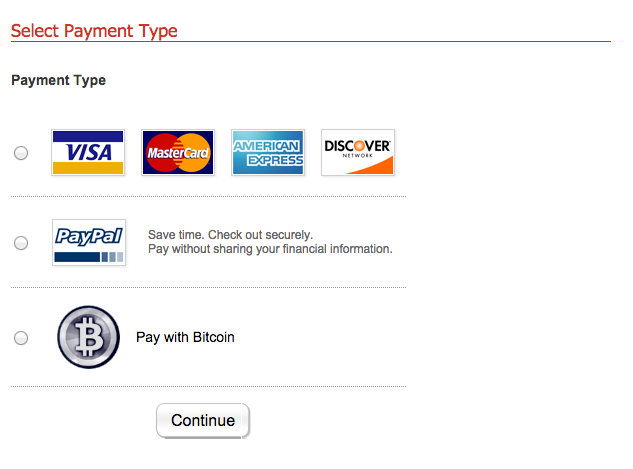5.2: Reading- E-Commerce
- Page ID
- 18627
Introduction

Business was quick to grasp the marketing and business potential offered by the Internet. Initially, businesses used the Internet to facilitate communication by means of e-mail. This was quickly followed by tapping the web’s potential for the dissemination of product and other marketing information. The provision of advertising space {banners) on frequently visited web sites is the main source of income for search engines (sites allowing you to search the Internet for information) and web portals (web sites that provide additional value-added personal services such as news, financial information, weather forecasts, items of interest etc.)
A number of specialized companies have realized that the Internet can be a direct and extremely cost-effective channel of distribution. Some companies already have a physical infrastructure and use the web to enhance their distribution channel e.g. you can now order your pizza, bank statements or movie tickets via the web. Other, virtual companies have almost no physical infrastructure and are mere “conductors” for the flow of products of services.
Important categories of e-commerce include:
- Business-to-consumer (B2C) in which organizations provide information online to customers, who can in turn place orders and make payments via the internet
- Business-to-business (B2B) in which business partners collaborate electronically
- Consumer-to-consumer (C2C) in which individuals sell products or services directly to other individuals.
The technologies that are needed to support electronic commerce include the network infrastructure (Internet, intranets, extranets), software tools for web site development and maintenance, secure ordering and payment methods, and resources for information sharing, communication and collaboration. When e-commerce is done in a wireless environment, such as through the use of cellphones, this is referred to as mobile commerce (m-commerce).
B2C e-Commerce
Electronic retailing is similar in principle to home shopping from catalogues, but offers a wider variety of products and services, often at lower prices. Search engines make it easy to locate and compare competitor’s products from one convenient location and without being restricted to usual shopping hours. Electronic malls provide access to a number of individual shops from one website. On-line auctions have also proved a popular way of disposing of items that need a quick sale.
Business-to-consumer commerce allows customers to make enquiries about products, place orders, pay accounts, and obtain service support via the Internet. Since customers can enter transactions at any time of the day or night, and from any geographical location, this can be a powerful tool for expanding the customer base of a business. However, the existence of a website does not guarantee that customers will use it, or that they will return to it after a first visit. Firms investing in electronic commerce need to consider a number of factors in developing and maintaining their e-commerce sites.
A successful web site should be attractive to look at and easy to use. In addition, it should offer its customers good performance, efficient service, personalization, incentives to purchase and security. Inadequate server power and communications capacity may cause customers to become frustrated when browsing or selecting products.
Many sites record details of their customers’ interests, so that they can be guided to the appropriate parts of the site. Customer loyalty can also be developed by offering discussion forums and links to related sites, and by providing incentives such as discounts and special offers for regular customers. And if you expect customers to purchase goods, and not just browse, then it is vital that customers should have complete confidence in the security of their personal information, and in the ability of the web store to deliver the goods as requested.
Much of the business value of the Internet lies in the ability to provide increased value to customers, with the focus on quality of service rather than simply price. By opening additional channels of communication between the business and its customers, businesses can find out the preferences of their customers, and tailor products to their needs. Customers can use the Internet to ask questions, air complaints, or request product support, which increase customer involvement in business functions such as product development and service.
However, although businesses may increase their markets while gaining from reduced advertising and administration costs, problems that have emerged include alienation of regular distributors, difficulty in shipping small orders over large distances, fierce competition and inadequate profit margins. Because of the delivery problem for physical products, many successful e-commerce firms have focused on the delivery of services, such as banking, securities trading, employment agencies and travel bureaus. Of course, every problem can be regarded as an opportunity – a local software developer has created and marketed a route scheduling application which provides optimized route sheets, with maps for individual routes and step-by-step driving instructions for effective and timeous order management, based on powerful geographical information systems to provide a user-friendly interface.
B2C e-commerce has also made it easier for firms to conduct market research, not only by collecting shopping statistics, but also by using questionnaires to find out what specific groups of customers want. This in turn has enabled the personalization of products to meet customer preferences.
B2B e-Commerce
 Business-to-business e-commerce comprises the majority of electronic transactions, involving the supply chain between organizations and their distributors, resellers, suppliers and other partners. Efficient management of the supply chain can cut costs, increase profits, improve relationships with customers and suppliers, and gain competitive advantage. To achieve this, firms need to
Business-to-business e-commerce comprises the majority of electronic transactions, involving the supply chain between organizations and their distributors, resellers, suppliers and other partners. Efficient management of the supply chain can cut costs, increase profits, improve relationships with customers and suppliers, and gain competitive advantage. To achieve this, firms need to
- Get the right product to the right place at the least cost;
- Keep inventory as low as possible while meeting customer requirements;
- Reduce cycle times by speeding up the acquisition and processing of raw materials.
Information technologies used to support business-to-business e-commerce include email, EDI and EFT, product catalogues, and order processing systems. These functions may be linked to traditional accounting and business information systems, to ensure that inventory and other databases are automatically updated via web transactions. Intranets provide a facility for members of an organization to chat, hold meetings and exchange information, while at the same time sensitive information is protected from unauthorized access by means of a firewall. An extranet provides a means of access to the intranet for authorized users such as business consultants.
Electronic data interchange (EDI) involves the electronic exchange of business transaction documents over computer networks, between organizations and their customers or suppliers. Value-added networks provided by third parties are frequently used for this purpose. Documents such as purchase orders, invoices and requests for quotations are electronically interchanged using standard message formats, which are specified by international protocols. EDI eliminates printing, postage and manual handling of documents, reducing time delays and errors, and thus increasing productivity. It also provides support for implementing a Justin-Time approach, which reduces lead time, lowers inventory levels, and frees capital for the business.
Marketing to other businesses is done by means of electronic catalogues and auction sites, which can increase sales while reducing advertising and administrative costs. From the buyer’s perspective, reverse auctions can be used to advertise requests for quotation in a bidding marketplace in order to attract potential suppliers. Third party vendors can make use of group purchasing to aggregate a number of separate small orders in order to increase negotiating power.
Collaborative commerce involves long-term relationships between organizations in areas such as demand forecasting, inventory management, and product design and manufacture. However, this presents a number of business challenges such as software integration, compatibility of technologies, and building of trust between firms.
C2C e-Commerce
Auctions are the most popular method of conducting business between individuals over the Internet. (Unfortunately, auction fraud was also the most common type of crime reported to the Internet Fraud Complaint Centre in 2002.) Other C2C activities include classified advertising, selling of personal services such as astrology and medical advice, and the exchange of files especially music and computer games.
Electronic funds transfer
Electronic payment systems can be used to transfer funds between the bank accounts of a business and its suppliers, or from a customer to the business. In retail stores, wide area networks may connect POS terminals in retail stores to bank EFT systems. In most cases, an intermediary organization acts as an automated clearinghouse, which debits and credits the relevant accounts.
The most popular payment method used by individual consumers is the credit card, which requires the merchant to pay a commission to the bank on each transaction. For transactions involving small amounts that do not justify the payment of commission, merchants may accept electronic money in the form of digital cash In this case, the customer “buys” money from the bank in the form of a unique cash number, which is transmitted to the merchant at the time of purchase and “deposited” in an account at a participating bank. In South Africa several banks have developed their own forms of digital cash, such as e-bucks from First National Bank.
 An important issue in electronic commerce is the security of Internet transactions. Data is commonly encrypted to reduce the vulnerability of credit card transactions. Secure Sockets Layer (SSL) and Secure Electronics Transaction (SET) are two of the standards used to secure electronic payments on the Internet. Secure sites usually have URLs that begin with https instead of the usual http.
An important issue in electronic commerce is the security of Internet transactions. Data is commonly encrypted to reduce the vulnerability of credit card transactions. Secure Sockets Layer (SSL) and Secure Electronics Transaction (SET) are two of the standards used to secure electronic payments on the Internet. Secure sites usually have URLs that begin with https instead of the usual http.
Current Issues in e-Commerce
For e-commerce to succeed, companies need to make large investments in hardware and telecommunications infrastructures that will be up and running 100% of the time, and software that is easy to use and reliable. A number of early participants in the e-commerce market suffered financial losses because their technology was not able to handle the huge numbers of transactions to be processed. Internet customers are often impatient, and will move to a competing site if the response is too slow.
Gaining the trust of customers can be difficult—the seller is often reluctant to despatch goods before payment, and the buyer may be reluctant to pay before receiving the goods. In South Africa, the speed of electronic ordering is often negated by delays in physical delivery.
Societal problems have also emerged, with children, gamblers and shopping addicts enjoying unrestricted access to electronic commerce sites. A German cannibal posted a web advertisement seeking a victim who was willing to be killed, sliced and eaten – and apparently found one! (reported in www.iol.co.za , 18 December 2002). The laws governing electronic commerce are still in their infancy, and international standards need to be developed in areas such as information privacy and taxation.
Since e-commerce supports global business transactions, it presents the challenge of customizing web sites to appeal to people of different nationalities and cultures (and even different languages). South Africa’s leading role in e-commerce in Africa can probably be attributed to the fact that it has a relatively advanced telecommunication infrastructure and a large number of English-speaking users.
South African Perspective
Because a website can easily be developed as a front for a fraudulent company, businesses need a way to guarantee their authenticity to potential customers. Thawte Consulting, the company established by Mark Shuttleworth after graduating from UCT and later sold to market leader Verisign, provided (among other products) digital certificates which serve two purposes: to ensure that no sensitive information can be viewed by unauthorized users, and to provide users with assurance regarding the ownership of the site. By providing certificates at a lower cost than its competitors, but with similar technological and security standards, Thawte rapidly established itself as the second largest provider of digital certificates.
These non-forgeable Secure Sockets Layer (SSL) certificates are issued and digitally signed by a company such as Thawte, which has verified that the website really is owned by the organization requesting the certificate. Once the digital certificate has been installed on the site, the SSL uses complex encryption techniques to scramble confidential information.
Beyond the Basics
Encryption is the process of converting readable data into unreadable characters to prevent unauthorised access. Encrypted data can be safely transmitted or stored, but must be decrypted before it can be read, by using an encryption key, which is sometimes the same formula that was used to scramble it in the first place. Simple encryption methods include:
- Transposition: in which the order of characters is switched, for example each pair of adjacent characters is swapped.
- Substitution: in which each character is replaced by some other predetermined character.
- Expansion: additional letters are inserted after each of the characters in the original text.
- Compaction: characters are removed from specific positions and then stored or transmitted separately.
Most encryption programs use a combination of all four methods.
Private key encryption relies on both sender and recipient having access to the same encryption key. Public key encryption makes use of two keys: a message encrypted with your public key can only be decrypted using your private key. This means that you can safely communicate your public key to business contacts, who are then able to send you confidential data that can only be read using your private key. Security agencies in the United States have
lobbied for some time for private keys to be independently stored, so that encrypted communications could be monitored when national security is considered to be at risk.
Exercises
B2C e-commerce
What advantages does the customer stand to gain from B2C e-commerce, compared with traditional business models?
Can you think of any potential disadvantages?
C2C e-commerce
Give reasons why internet auctions are a common source of fraud, and suggest control structures that could be put in place to reduce this problem.
B2B e-commerce
Explain how B2B e-commerce could contribute to each of the alternative strategies for competitive advantage (low-cost, differentiation, niche marketing) that were described in the previous chapter.
- Discovering Information Systems Chapter 9. Authored by: Jean-Paul Van Belle, Mike Eccles, and Jane Nash. Located at: https://archive.org/details/ost-computer-science-discoveringinformationsystems. License: CC BY-NC-ND: Attribution-NonCommercial-NoDerivatives
- Pay with Bitcoin. Authored by: Lars Plougmann. Located at: https://www.flickr.com/photos/criminalintent/15300343255/. License: CC BY-SA: Attribution-ShareAlike
- Internet shopping cart. Authored by: geralt. Located at: https://pixabay.com/en/shopping-cart-internet-728409/. License: CC0: No Rights Reserved
- Bottom of the Desk Drawer. Authored by: Krissy Venosdale. Located at: https://www.flickr.com/photos/venosdale/4617152976/. License: CC BY-NC-ND: Attribution-NonCommercial-NoDerivatives

